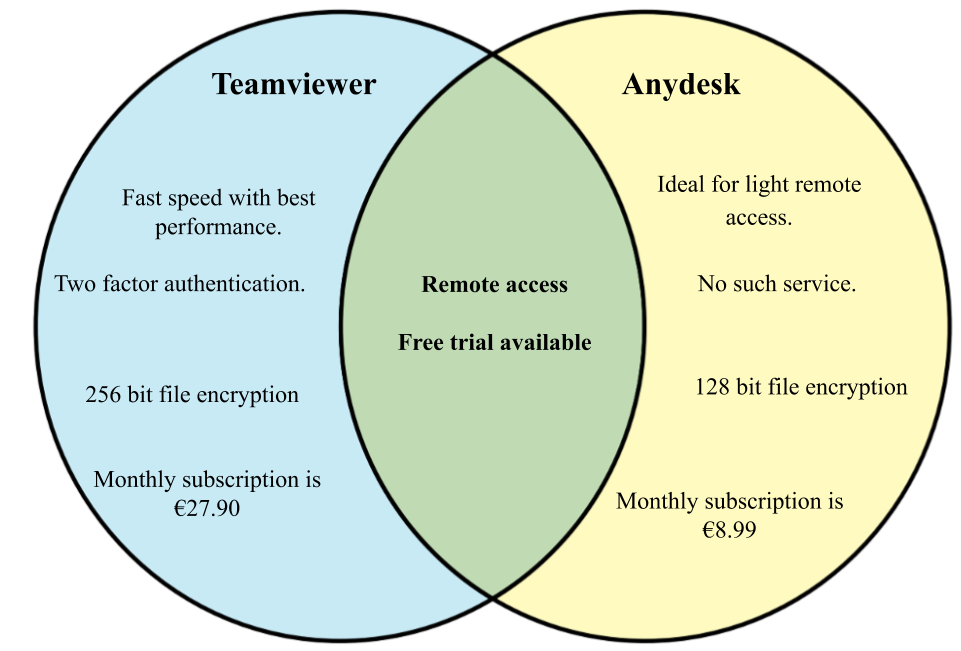Difference between TeamViewer and Anydesk
Ever had someone gain total control of your desktop or laptop without being anywhere near it, especially at work? Well, the process is called remote screen sharing and the two very prominent software which enable the same are TeamViewer and Anydesk. Despite serving the same purpose, there are certain differences between them, knowing which will help you to make an informed decision while choosing a screen sharing software.
TeamViewer brushes past all its rivals in terms of popularity. Now, you might be wondering why TeamViewer is so popular? Though Anydesk is lighter and faster, TeamViewer comes with a host of features such as intuitive interface, easy documentation, and convenient file transfer. It even allows you to host online meetings.
Another major factor which sets them apart is their compatibility. Anydesk is mainly compatible with Windows 10-7, Windows XP, Linux and macOS whereas TeamViewer is compatible with almost all the operating systems including Android and Blackberry. This makes TeamViewer widely available for all internal processes working on different operating systems in any organization.
Other notable features that gives TeamViewer an edge over Anydesk are 4k support, ease of navigating an unattended session, support session recording and 256-bit encryption compared to Anydesk that is 128-bit.
| Teamviewer | Anydesk | |
|---|---|---|
| Speed | Fast and best performance is provided. | A good option for light remote access. |
| Compatibility | Compatible with all devices. | Compatible with limited devices including Windows XP, Linux and iOS. |
| File Encryption | 256-bit | 128-bit |
| Security | Two-factor authentication. | No such service available. |
| Pricing | After free trial, pricing starts from €27.90 per month. | After free trial, pricing starts from €8.99 per month. |
| Chat and Commenting | Chat and comments are available. | Chat and comments are unavailable. |

